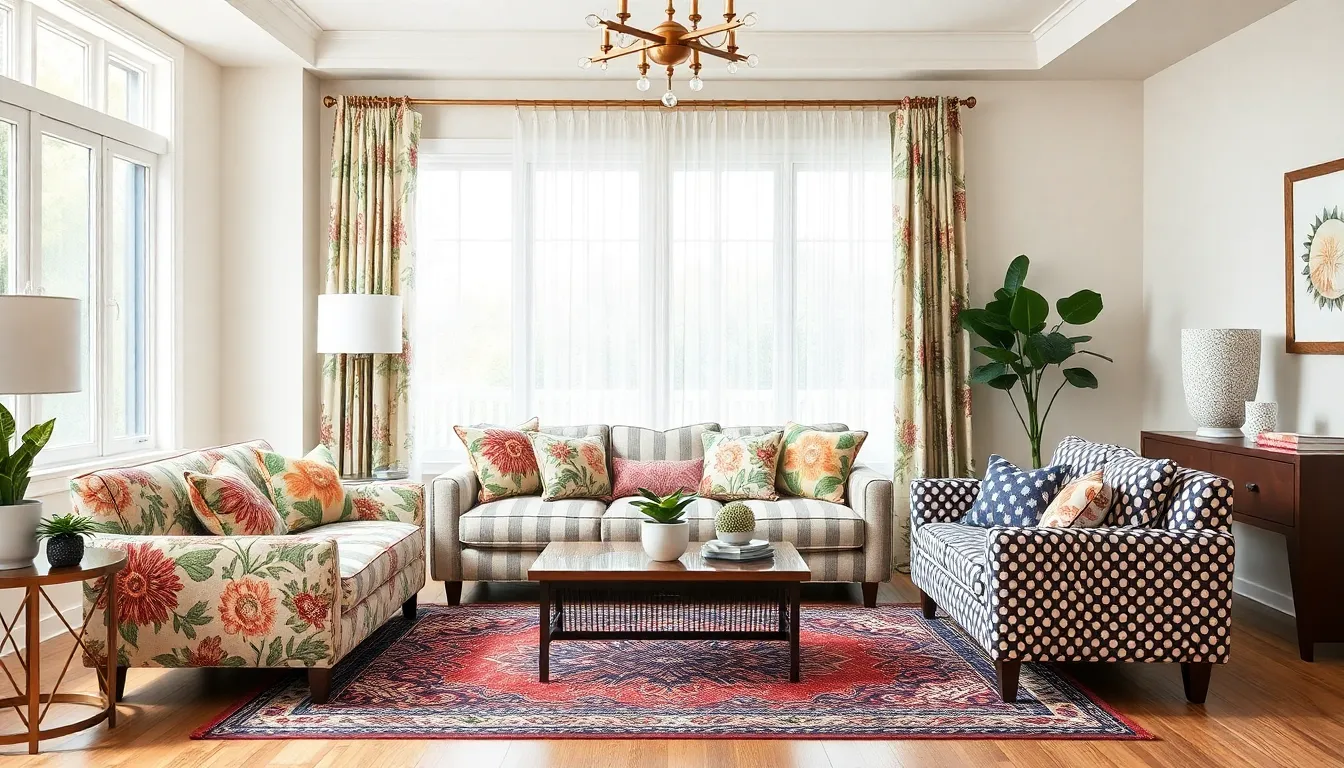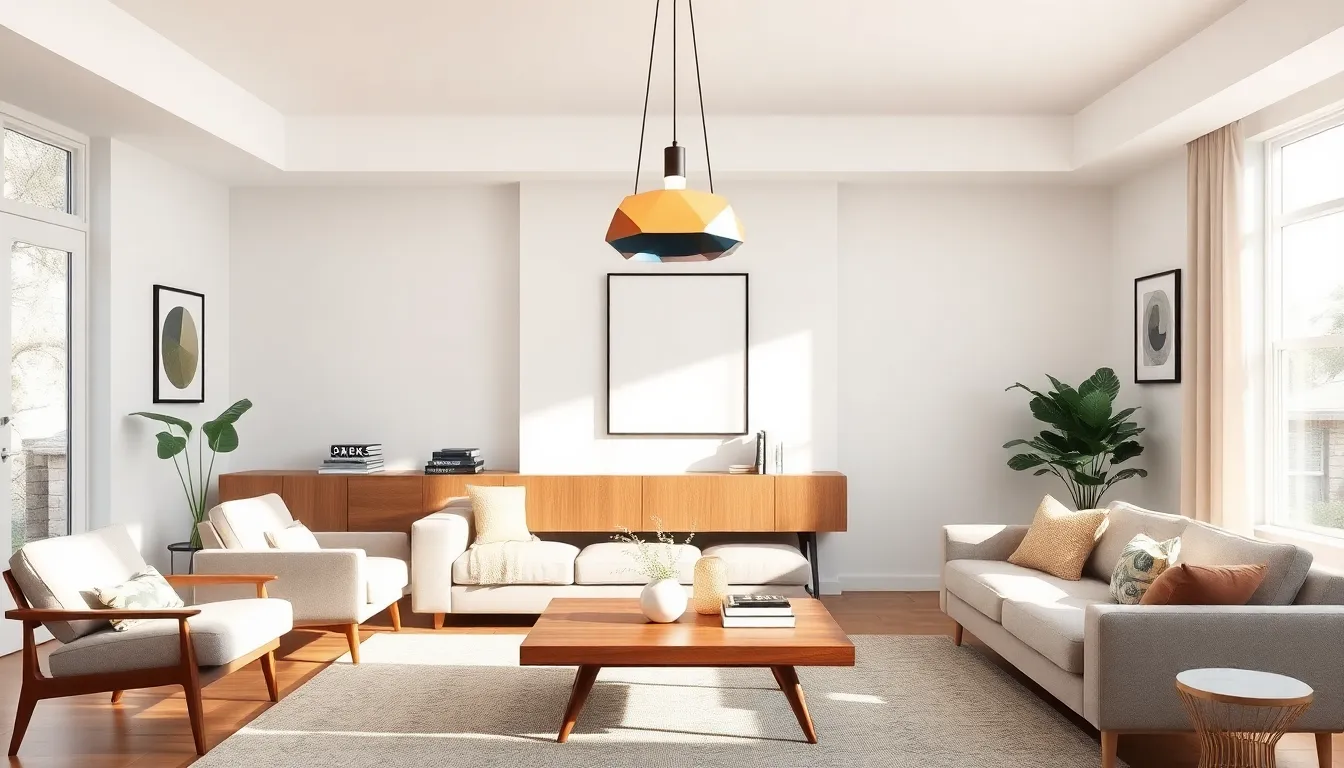Mixing patterns in decor might sound like a recipe for chaos, but it’s actually the secret sauce to creating a vibrant and inviting space. Imagine stepping into a room bursting with personality, where stripes dance with florals and polka dots play nice with paisleys. It’s like a party for your walls, and everyone’s invited!
Table of Contents
ToggleUnderstanding Mixing Patterns in Decor
Mixing patterns enriches a decor theme and fosters a unique atmosphere. By skillfully combining different designs, a space can exhibit character and engage visitors.
The Importance of Patterns
Patterns serve as visual elements that inject life into a room. They can evoke emotions and highlight personal style. Unique combinations create focal points and a sense of depth. Cohesive use of patterns enhances overall design harmony. Consider how diverse patterns can balance each other to prevent visual chaos. Introducing patterns strategically obviously contributes to creating a vibrant, inviting environment.
Types of Patterns to Consider
Choose among various patterns that suit different contexts. Stripes offer a classic and structured look, enhancing walls or upholstery. Floral designs infuse nature’s beauty, perfect for brightening spaces. Geometric patterns provide a modern touch, often seen in area rugs or wall art. Polka dots add whimsy and charm, suitable for both children’s rooms and playful settings. Paisley patterns bring an elegant touch, ideal for textiles and accessories. Assessing these options based on color and scale helps in achieving cohesion and balance.
Techniques for Mixing Patterns

Mixing patterns requires intentional strategies to achieve a cohesive look. Employing specific techniques enhances the overall decor.
The 60-30-10 Rule
The 60-30-10 rule simplifies color distribution in decor. Sixty percent of the space should feature a dominant pattern. A secondary pattern takes up thirty percent of the area, while the final ten percent consists of an accent pattern. Choosing patterns in varying scales enriches the visual interest and maintains harmony. For instance, selecting a large floral pattern for the main fabric, incorporating medium-sized stripes in accents, and adding small polka dots on cushions keeps the design vibrant yet balanced.
Creating a Visual Balance
Visual balance creates a harmonious decor environment. One technique involves varying the scale of patterns within the same color family. Alternating between large and small patterns prevents any one element from overpowering the decor. Additionally, distributing pattern placement evenly throughout the space enhances the sense of cohesion. Using contrasting textures alongside patterns, such as mixing a smooth fabric with a textured one, adds depth to the overall arrangement. The goal remains clear: ensure that all elements complement rather than compete with one another.
Common Mistakes to Avoid
Mixing patterns enhances decor, but avoiding certain mistakes ensures success. Recognizing these oversights can significantly improve the outcome of a design project.
Overloading with Patterns
Overloading with patterns overwhelms a space and distracts from its beauty. Too many different patterns compete for attention, creating chaos instead of harmony. It’s crucial to limit the number of patterns to achieve a cohesive look. A balance of dominant and secondary patterns adds depth without clutter. Selecting a few carefully chosen patterns can establish an inviting atmosphere while maintaining visual interest.
Incompatibility of Colors
Incompatibility of colors results in a jarring aesthetic that clashes rather than complements. Choosing patterns without considering color compatibility often leads to a disjointed appearance. Colors should coordinate or share a common palette to foster unity across patterns. Harmonizing hues creates a seamless transition between elements, enhancing overall decor. Assessing color relationships ensures that patterns enhance, rather than detract from, a cohesive design theme.
Examples of Successful Pattern Mixing
Mixing patterns can elevate home decor by creating visual interest and showcasing personal style. The following examples highlight effective ways to blend patterns in various spaces.
Living Room Inspiration
In living rooms, combining bold stripes with delicate florals can create a harmonious yet dynamic environment. Layering a striped rug over a floral throw can establish a cohesive look while balancing energies. Incorporating geometric cushions alongside paisley curtains introduces varied textures, enhancing depth. Unique pieces, like a polka dot chair paired with a patterned sofa, add liveliness without overwhelming the space. This thoughtful arrangement encourages playful interactions while maintaining visual cohesion.
Bedroom Ideas
For bedrooms, mixing patterns offers a soothing yet inviting atmosphere. Consider using a large floral duvet cover as a focal point, then integrating smaller geometric pillows for contrast. Stripes on the throw blanket can complement the floral motifs, adding dimension. Choosing a subtle paisley bed skirt can create a layered effect that feels well-curated. Lastly, including patterned artwork on the walls reinforces the theme while tying disparate elements together, cultivating a restful space.
Mixing patterns in decor transforms spaces into vibrant and inviting environments. By thoughtfully combining various patterns and textures, anyone can showcase their unique style while creating visual interest. The key lies in maintaining balance through color coordination and pattern scale.
With the right techniques and a mindful approach, it’s possible to avoid common pitfalls and achieve a cohesive look. The examples provided illustrate the endless possibilities for blending patterns, proving that creativity knows no bounds. Embracing this art form can lead to spaces that not only reflect personal taste but also foster warmth and engagement, making every room a true reflection of its inhabitants.




